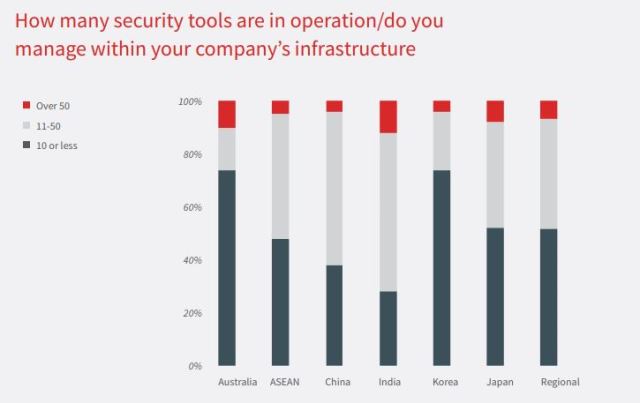Service providers (SPs) in Asia Pacific are concerned over their security infrastructure as they deploy new technologies, such as distributed clouds, the Internet of Things (IoT) and 5G, according to Ovum Research report organized by Juniper Networks.

One quarter of SPs surveyed are very satisfied with their existing security infrastructure, with the majority planning heavy investment into security over the next two years, the research report said.
“Network deployments have changed significantly over the past few years. Service providers are rapidly moving to the cloud and adopting new technologies, such as IoT and 5G, which will redefine the way we live, work and play,” said Ang Thiam Guan, VP & GM, APAC, Juniper Networks.
The report polled 51 IT decision makers from SPs across Asia Pacific, including Singapore, China, Australia, Japan, Korea and India. Data from this research was used together with data from an international survey of 100 decision makers from SPs globally, conducted by Heavy Reading.
Recommendations to CIOs and CTOs
# Scale up and scale out security infrastructure in line with the move to distributed cloud, IoT/edge computing and 5G
# Evaluate security performance to ensure that security solutions do not become a bottleneck to greater demands on network infrastructure
# Ensure intrusion detection systems are up to date. Weak intrusion detection is leading to an increase in DDoS attacks
# Use artificial intelligence and machine learning in your intrusion detection systems so as unusual network activity, that may come from an unknown threat, can be detected and addressed
# Service providers must have a unified security management system that manages both physical and virtual domains and provides a unified view of these domains.
Adoption of new technologies, including distributed clouds, IoT and 5G, has introduced additional security susceptibilities, forcing SPs to scale up and scale out their security infrastructure to remain relevant and secure, said Andrew Milroy, head of Advisory Services, Asia Pacific at Ovum.
However, SPs generally feel they have some catching up to do in terms of security readiness, with overall findings from the region-wide survey revealing significant concerns:
# Only 29 percent are very satisfied with their current firewall
# 65 percent will upgrade their firewall within the next year
# 61 percent plan to increase spending on firewall product and services over the next two years
In terms of recommended risk mitigation investment, areas to prioritize include improved intrusion detection, cloud security and upgraded firewalls, as well as architecture that allows for a unified view of security tools and networks.
SPs are developing distributed cloud architectures ahead of 5G deployments, with only 6 percent indicating they have no plans to deploy a distributed cloud. With the distributed cloud, they can offer IoT-ready services and position themselves to support third-party applications, providing them the ability to enter adjacent markets to create new revenue streams.
The top three perceived challenges to IoT adoption are data/network security (32 percent), business process integration (28 percent) and ongoing costs (28 percent).
IoT devices serve as an entry point for a network and are increasingly being used to launch Distributed Denial of Service (DDoS) attacks. This will require SPs to filter traffic on a larger scale and will necessitate greater automation, intelligence and machine learning capabilities for improved security postures and policies.
As the SPs transition toward 5G rollout, the expectation is that 5G technology will allow mobile SPs to partition their network resources to address a diverse set of use cases with differing performance and functional requirements.
96 percent of the APAC SPs surveyed plan to use 5G technology and close to three-quarters expect to do so in the next two years.
This 5G-enabled provision of multiple use cases or network slices all require varying security protocol choices and policy implementation, further compounding the security concerns already predicted to arise from distributed clouds and IoT.
Intrusion detection, cloud security and upgraded firewalls top focus area for SPs. SPs are investing across multiple solutions in order to address these new cybersecurity challenges created by distributed clouds, IoT and 5G.
The top three areas of focus were respective more intrusion detection solutions (88 percent), upgrading security gateway, GI-firewall and roaming firewall (86 percent) and greater cloud security (84 percent).
At present, the security systems of APAC SPs are usually well-equipped to handle known threats and comparatively small DDoS attacks.
Another recommended priority looking ahead would be the provision for a unified view of the evolving networks and the centralization of security alerts.
Up to 50 percent of APAC SPs manage between 11 to more than 50 security tools within their company’s infrastructure.
The application of security policy changes in a multi-dashboard environment itself presents a security threat, as cybersecurity staffs are faced with the challenge of monitoring multiple consoles and having to cross-reference between disparate screens and information formats, the report said.
The report said a unified security management system that manages and provides a unified view of both physical and virtual domains will be key in addressing the challenging task of enabling SPs to secure their networks.





